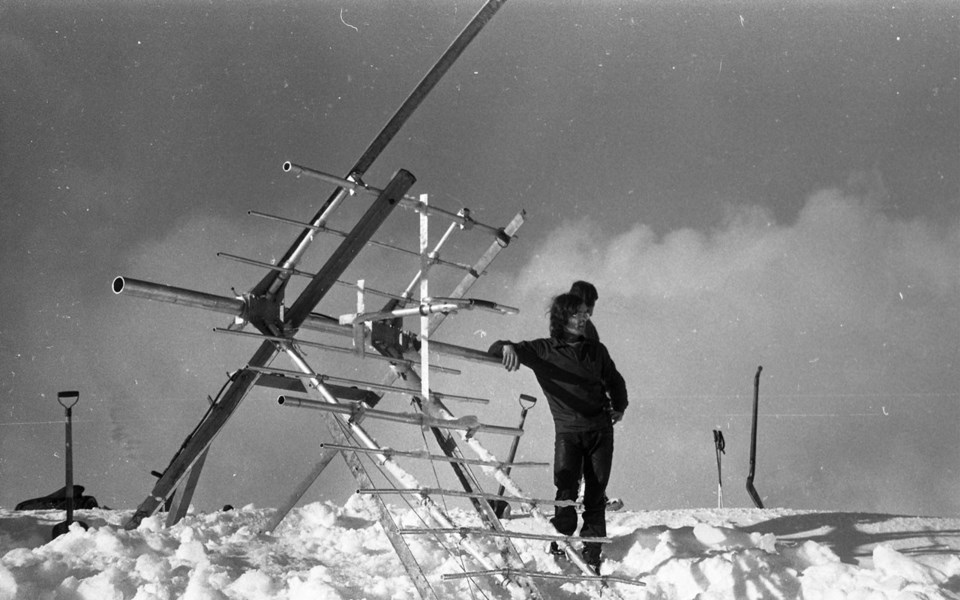Bringing television access to Whistler was no easy feat before cable and satellite, but Walter Zebrowski can be credited with bringing it to the valley.
The Chamber of Commerce apparently began discussing television at its first meeting in 1966, and members wrote letters to the provincial government in Victoria asking for the installation of antennas or a TV cable. But they heard nothing back from their queries.
Zebrowski eventually asked the Chamber members to give him free rein to attempt to bring television to the Whistler valley. He was determined and eager, and the members approved. In 1970, Zebrowski took a trip to Vancouver and with his own money purchased a TV antenna and a small battery-operated television set.
Next came the challenge of finding a location for the antenna where it would receive a TV signal. Zebrowski spent months exploring the surrounding mountains by snowmobile and helicopter for the right location.
Between the two peaks of Mount Sproatt he found a signal.
Zebrowski ordered the rest of the equipment that was needed to put up the antenna and it was erected with the help of Jon Anderson. Next to the antenna, Zebrowski proudly hung a flag of Garibaldi Lifts Ltd.
A few days later, however, when a storm passed over the mountain, the masts were all destroyed. Zebrowski described the main antenna as looking like "a swan with a broken neck," so they started all over again with smaller masts that were more resistant to the wind.
At the annual December Ball of the Chamber of Commerce, Zebrowski put a TV set in the corner of the hall and covered it. After the usual complaining about the lack of TV, he turned the set on and embraced the astonishment and joy of the other Chamber members.
The antenna originally received three different stations.
Along with the TV antenna, Zebrowski also founded the Whistler Television Society, which helped maintain the site and collected a fee from members to help fund the service.
In the late 1990s, the antenna was struck by lightning and one of the devices stopped working. From then, there were only two channels available. By the time this happened, most people in the valley were using cable or satellite TV and no one was around who knew how to, or was willing to, repair the primitive technology.
Zebrowski passed away in 1996, leaving a lasting legacy in Whistler.
The television signal captured by Zebrowski eventually became redundant and by 1999, it was unknown if there was anyone still using the Sproatt signal. The municipality decided to stop collecting taxes to fund the Whistler Television Society and when the CRTC license expired in 2000, the signal was no longer usable.
The site of the Sproatt antenna was an ideal location, as it was later proposed, to build an internet connection structure. Paul Burrows, who had acted as a caretaker for the society and helped shovel snow off of the repeater in the winter, claimed that "You can see clear all of Whistler from that site."




